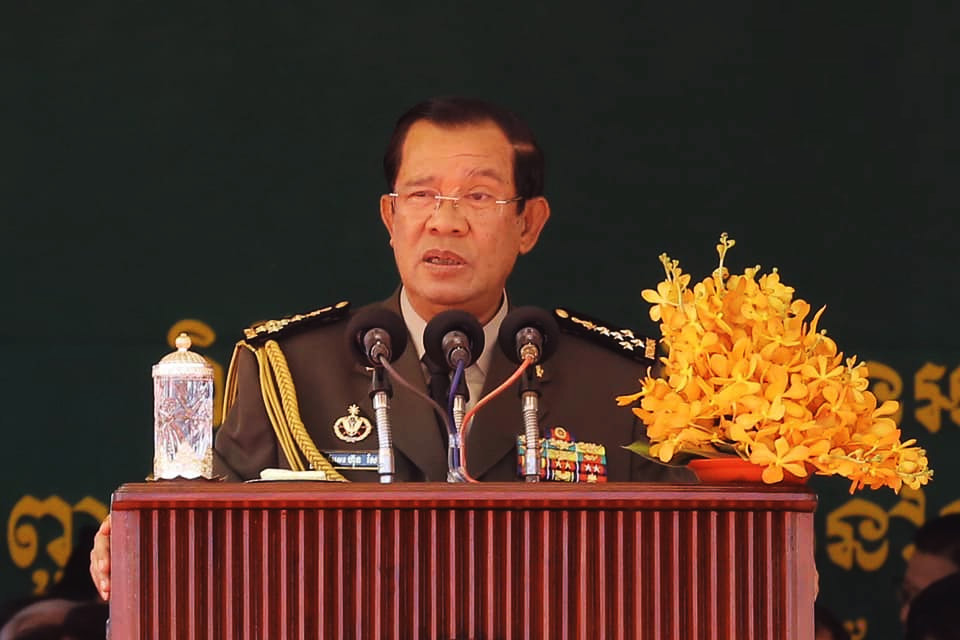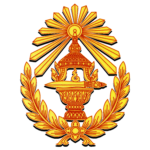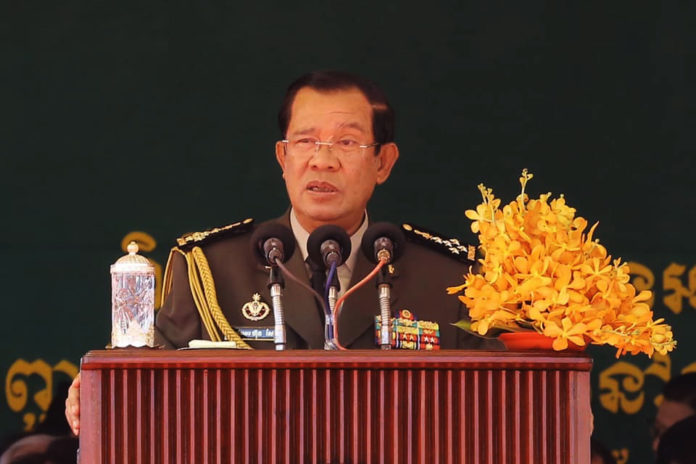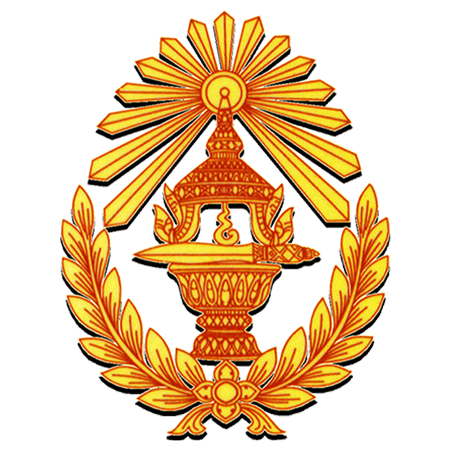I am so happy today to join with Buddhist Monks, Excellencies, Ladies, Gentlemen, and compatriots to celebrate this auspicious anniversary event of ending war through implementation of the win-win policy, to inaugurate the win-win memorial, and to declare official name Win-Win to this avenue that is running from the National Road 6 to National Road 4. Samdech Pichey Sena Tia Banh already made a report about the construction of the palace. Today, I wish to review points concerning this long journey leading to ending the war that we should bring them up and share after twenty years of reconciliation and uniting the country together for the very first time in hundreds years of history […] I am pleased to have learnt from the report about efforts made by construction commission led by Samdech Tia Banh but also collations and documentations of every detail information in relation to ending this war through the win-win policy […]
Devoting Win-Win Policy Achievements for Every Cambodians
Let me take this opportune moment to devote success of war’s end through implementation of the win-win policy for Cambodians from all walks of life and political tendencies. People have benefited from this policy clearly. Peace made through this win-win policy has become a common property of Cambodian nationals, no matter what political tendency they may follow. Though some of them may never recognized it, they still have already gained from it. In this meaning, I am devoting this win-win policy achievements for Cambodians in all corners of the country and the world. Let us ensure that these achievements will continue to take a long lasting existence on this pitiful country of ours. I am taking this auspicious occasion to express my deep thanks to Samdech Preah Borom Ratanakaod and the Queen-Mother for always giving their supports to the process of national reconciliation.
Samdech Preah Borom Ratanakaod Granted Ieng Sary’s Pardon
HM the King then (Samdech Preah Norodom Sihanouk or Samdech Preah Borom Ratanakaod) had been the key to our start in relation to balance of power. Then two divisions of Khmer Rouge separatist forces in Pailin and in Mealai were over one hundreds Kilometers from each other. Between them there were this (Khmer Rouge’s) 250 Front in which there were many divisions […] for once we did not achieve a balance of military force yet as the other factions of the Khmer Rouge – politically, still had Head of State and Prime Minister Khieu Samphan, Pol Pot, Nuon Chea, Son Sen, etc. with them. We did not have the balance of political power yet […] the only best option was to seek for Ieng Sary’s defection […] Tia Banh and Tia Chamroeun went looking for Ieng Sary. As he was sentenced by the People’s Tribunal in 1979, we had to find a rehabilitation of his political right so that he could be a political umbrella for the Khmer Rouge separatists […] Samdech Preah Norodom Sihanouk said to me if I could raise two-third support to this initiative of mine in the National Assembly, he would give his signature to grant pardon to Ieng Sary. I had to work then with Samdech Krom Preah Norodom Ranaridh on one side to gather members of the Cambodian People’s Party and on another to ensure supports of FUNCINPEC to get a pass to the proposed pardon for Ieng Sary […] I specifically thank Samdech Preah Borom Ratanakaod for this gesture of support to the Royal Government of Cambodia in the process of national reconciliation […]
Why Win-Win Policy?
I think I will take today’s opportune moment to address to our people and nation about why we have the win-win policy. To start from 20 June 1977 when I left Cambodia in search for a way to liberate the country, I would need many hours […] however, I would pick up major points to share with our compatriots in this 20thanniversary occasion when Cambodians ended war […] you may need to be aware of this fact first about why do we decide to pick 29 December 1998 as the date when the country ended war. I will talk more about it but let me stress here that 29 December 1998 was the day when the Head of State, Prime Minister, Speaker, and the Cabinet of the Khmer Rouge surrendered to (the Royal Government’s) Prime Minister’s house. That was a modus that is unprecedented in the world […] as to why do Cambodia need a win-win policy, we ought to know our history.
Firstly, War started when there was this coup on 18 March 1970. It was a starting point of the Cambodian people’s tragedy. Cambodia that was then an island of peace led by Samdech Preah Norodom Sihanouk in the time of Vietnam War was under continued threats and bombardments of aggressors. After the coup led by Lon Nol, Sarik Matak, In Tam, Cheng Heng, etc. to overthrow Samdech Preah Norodom Sihanouk, the island of peace fell into war. Five years of fighting brought victory to the Khmer United National Front. Unfortunately, Pol Pot plundered the victory to put in place the regime of genocide […]
People continued to die under the Pol Pot’s regime. We then had to organize another resistance movement, which, forty years ago, at this moment, was on its march to liberate Phnom Penh on 7 January 1979. The liberation brought Pol Pot down […] but war continued. Peace prevailed in a bigger part of the country. War continued in some locations and times. However, war had had severe impacts on socio-economic development efforts and poverty reduction. Cambodian had to survive unjust embargo from outside. That would include also the United Nations continuing to allow Pol Pot’s to be present despite the fact that they had killed the Cambodians […]
Secondly, we try to find way to end war starting from the Samdech Preah Sihanouk-Hun Sen Meeting in Fere-en-Tardenois (France) and more negotiations until we reached a political settlement to the Cambodian problem. UNTAC failed to accomplish what we wish to achieve through the Paris Peace Agreement. On 24 September 1993, UNTAC left Cambodia while the country was divided in two controlled areas and governments. War continued to rage in the country. UNTAC spent over two billion USD but failed to end the war. We thanked them for what they did for political settlement in Cambodia, though. Three out of four parties contested in the general elections and joined the coalition Royal Government, except the Khmer Rouge […]
DIFID – A Strategy to Dissolving Khmer Rouge Militarily and Politically
… Tough battle in Pailin in March and April 1994 followed by negotiation in North Korea under the presidency of Samdech Preah Norodom Sihanouk. The Khmer Rouge side led by Khieu Samphan and Son Sen. The Royal Government’s side led by Samdech Chea Sim, Samdech Krom Preah Norodom Ranaridhm, both of who offered me the role to conduct negotiation with Khieu Samphan. Samdech Buddhist Patriarch Tep Vong and Bou Kri were also present. The five Buddhist monks asked from Khieu Samphan for a ceasefire. Khieu Samphan refused. Returning from North Korea, I decided to work on an initiation to outlaw the Khmer Rouge. The law did not deny any possibility for reconciliation. Let me stress here DIFID was one of the strategies contributing to dissolving political and military organizations of the Khmer Rouge […]
Three Core Elements of Win-Win Policy
… I had learnt from arrested Khmer Rouge soldiers what did they really want. Based on what we had learnt, we were able to put out a win-win policy with three fundamental elements aimed at dissolving the Khmer Rouge militarily and politically, while reconciling and uniting the land.
Firstly, guarantee everyone’s life. We have ensured that no one would be arrested or killed. We offer them life guarantee. If we were to do differently, on one would have come to us. This is a major experience that we must learn from.
Secondly, guarantee their professions and jobs. We cannot just say it in or mouth but do it in real term. What we did in Cambodia could not possibly be a lesson for other countries. We dared to allow surrendered troops to keep their ranks and files. All they had to do was to change their uniforms to those of the Royal Government’s forces and to no longer implement the Khmer Rouge obligation but those of the Royal Governments […]
Thirdly, guarantee they would keep their ownerships and properties. They would keep what they have […]
“Keo Pong Did It, We Gained Oral”
Let me reaffirm herewith, in fact we first started win-win policy in February 1996 in Oral area with (the Khmer Rouge General Keo Pong) through to ending the war on 29 December 1998. Many were asking me with concerns after Keo Pong went back to his commanding area “what should we do if Keo Pong were not faithful to the plan.” I said to them “there would be neither gain nor loss.” If we were to hold him up, we would have only Keo Pong. If he were to not implement what we agreed with him, the Khmer Rouge also would have only Keo Pong back. There would be no gain or loss. If Keo Pong implemented the term, we would have Oral back to the fold of our nation. He did it. We did it. We got Oral to the fold connecting Kompong Speu altogether, Pursat, parts of Preah Sihanouk, Takeo and Kompot […]
Armed Clashes in July 1997 Postponed Last Stronghold Anlong Veng Integration
In 1996 and early 1997, we achieved our plan of integration of the southern part of the national road 5 and in Tonle Sap area. We wished to expedite our effort to achieve final integration of Anlong veng, the last stronghold of the Khmer Rouge, but, unfortunately, there was this armed clashes in Phnom Penh. We worked to neutralize the Khmer Rouge in their areas but some were brought in to Phnom Penh. It was a big issue and not simple to resolve […] despite all odds, we finally succeeded in integrating Anlong Veng on 23 April 1998. I sent Samdech Pichey Sena Tia Banh in my place to ensure the integration of Anlong Veng. I could not be there as in other places because I was in mourning over the death of my mother […] people in Anlong Veng, the last stronghold of Khmer Rouge, also participated in the elections in 1998.
Three Messages for Receiving Khmer Rouge’s Surrenders
Though integration took place finally in April 1998, war continued still since the Khmer Rouge leaders had not yet surrendered or been arrested. It was until 29 December 1998, Kheiu Samphan, Head of State and Prime Minister, and other leaders of Democratic Kampuchea gathered and surrendered officially (at my house). There could be a question as to why they gathered and surrendered at my house. Let me clarify to our compatriots that I had three messages to send out from the meeting. Firstly, to the Khmer Rouge ranks and files that they must stop fighting because their leaders are already surrendering to (the elected) Prime Minister’s. Secondly, I sent a message to the Cambodians that war had come to its end as they wished. Thirdly, I sent a message to international community, investors, and tourists, Cambodia is no longer at war […]
True Meaning and Interests of Win-Win Policy
Let me now briefly share with you what I see as true meaning and interests of win-win policies.
First, war and armed clashes completely stopped. There are no more death or injuries from war in the last 20 years. People may ask themselves if war were to continue for another twenty years, how many could have been killed? How much money we could have spent to make war, while now we have been mobilizing resources to build the country. I wish those in the opposition recognize the truth […]
Secondly, we have ended war through win-win policy from 1996 through to late 1998 without using a single bullet. We have resolved problem based on trust between Khmers and without any foreign interventions and/or orders. The trust has instilled a firm peace more than twenty years already […] win-win policy carried out without a single words written anywhere, except the three core elements that I mentioned earlier […]
Dare Think, Be Responsible and Sacrifice for Peace
I always said when I was in the former Khmer Rouge areas that what they had done was not a surrender or confession but an obligation that as Cambodians they had to do for the country to stop conflict created by former generation […] my mother and my grandaunt were concerned about my trip to the Khmer Rouge area and they came to me saying “are you not afraid that they would shoot you dead?” I said to my mom “If that would be the case, only I and a few who came with me would die. If that was not the case, we would reunite the country.” We did it. A divided country has now reunited. The most outstanding point here is to dare think, dare take responsibility, and dare to sacrifice for peace […]
Four Reasons Khmer Rouge Dissolved
There would arise a question as to why win-win policy dissolved the Khmer Rouge organization militarily and politically? Some who claimed to be experts on the Paris Peace Agreement may have thought that dissolving the Khmer Rouge organization was not in the Agreement. We, however, did what we did in accordance with the Constitution of the Kingdom of Cambodia which does not allow any secession. Firstly, the Khmer Rouge’s political and military organization violated human rights and killed millions of lives. Secondly, they walked out on the Paris Peace Agreement, while there were internal conflicts and killings among them – for instance, Pol Pot killed National Defense Minister Son Sen, his wife, children and grandchildren […] They boycotted elections because their leadership machine was in deep internal division not just because of defection to the Royal Government of their lower ranks […]
Thirdly, would anyone in his right mind to allow such organization to exist and continue to lead a war against the legally elected government organized by the United Nations? And what is even more important is the fourth point in which win-win policy already gathered to the Royal Government’s side their military and political ranks and files. Even if they would want to continue making war, they could not because no one would follow them […] the Khmer Rouge “rusting” policy has come to an end when clashing with Hun Sen’s win-win policy that is in conformity with national and people’s aspirations […]
Thirdly, we reunite the land and water for the first time in a long and suffering history. Should we look back into our history from Punhea Yaat in 1740, Cambodian always had more than one rulers […] under Pol Pot, they could not rule the whole country too. In Koh Kong, there was this resistant movement led by the late HE Say Phouthong and Samdech Pichey Sena Tia Banh. In the northeast, there was this resistant movement led by HE Bun Mi and Bou Thang. In 1977 and early 1978, I led the armed movement and infiltrated deeper inside the country […] more importantly, on 25 May 1978, Samdech Heng Samrin and Samdech Chea Sim rebelled in the east and occupied a certain area prior to declaring the establishment of the National United Front for Salvation of Kampuchea […]
With assistance from the voluntary army of Vietnam, we overthrew the regime of Pol Pot in a timely manner but war did not end. Cambodia returned to its state of being a divided nation – one part was the government of the People’s Republic of Kampuchea, and later State of Cambodia, and another part was the tripartite coalition government – with three controlled areas and armed forces […] implementing the Paris Peace Agreement from 1993 through to 1998, after UNTAC moved out, Cambodia continued to have two controlled areas, two governments and two armed forces. War continued. After 29 December 1998 through to the present, Cambodia is a country of one Constitution, one King, one Royal Government and armed forces for the first time in its long history.
Three Fields in Effect after Political and Administration Integration
Let me take this opportune moment to reiterate that we could not stop at launching integration of the former Khmer Rouge areas politically and administratively. I talked to my colleagues Tia Banh, Ke Kim Yan, Pol Saroeun, and others that political and administrative integration would not hold if we fail to focus attention on connectivity. We then urgently worked on connectivity and three fields have been in effect immediately – (1) communication and transport to those areas. We removed and destroyed mines that cut off people’s movement from one place to another; and ensure that everyone has equal access to services in (2) education and (3) health without discrimination […]
Fourthly, people in integrated areas live in peace and are free from fears. Families concerned no more of death of loved ones from war. Families reunited. No more separations. This is what win-win policy has provided. There is no such concern anymore in the last more than 20 years. There are no more trenches under their houses and they are making life better […]
Fifthly, war ended, land and water reunited, the country reaps gold and diamond opportunity to gather human labor, intelligent and property resources for the sake of socio-economic development and poverty alleviation. In the last more than twenty years we destroyed hundreds of thousands of weapons, reduced tens of thousands of military personnel to curb expenses in defense, while augmenting expenses in education, health and social affairs. This has contributed to national economic progress allowing Cambodia to bridge from low income country over to lower-middle income country […] we are ambitious to work on moving our country to higher-middle income by 2030 and high income by 2050 […]
Battlefields to Development Areas, Borders of Peace, Friendship, Cooperation
… This would be a roadmap for our country’s advancement. I must remind you that to achieve such ambition, peace is absolute and we must ensure that Cambodia is under one rule. In short, we have been implementing a strategy of two prongs – (a) transforming former battlefields into development areas […] having said this, I wish to call on concerned circles not to disturb the Cambodian people and/or cause more war in disguise of democracy and human rights […] learning from past lessons, I wish some countries avoid making three mistakes they did – (1) claiming to be democratic but supporting a military coup; (2) supporting Pol Pot – the killers, in the United Nations for 12 years, caring nothing about human rights; and (3) punishing those who worked for and defend peace and people’s lives for development; […], and (b) turning border areas into ones of peace, friendship, cooperation, and development. We already did it. We share borders with (the Socialist Republic of) Vietnam, the Kingdom of Thailand, and the People’s Democratic Republic of Laos. We have now ensured the borderlines are in peace, friendship, cooperation and development […]
Sixthly, Cambodia has been able to participate in strengthening regional peace and in solving international affairs. Cambodia has been active in ASEAN, Greater Mekong Sub-region, ACMECS, CLMV, CLV, and mechanisms of Mekong-Lancang, Mekong-Japan, Mekong-South Korea, and Mekong-US […] in the framework of international cooperation, we have sent peacekeeping troops to a number of countries – Sudan, South Sudan, Lebanon, Mali, and Central African Republic, formerly also in Chad. We are preparing to host in 2020 the Asia-Europe Meeting in Phnom Penh […]
Seventhly, having ended war, Cambodia receives influx of investors and foreign tourists. Cambodia’s trade volume has now grown to 25 billion USD, of which Cambodia exported about 12 billion USD. while there were no tourists coming to Cambodia in the wartime, we have now received nearly six million tourist arrivals. Hopefully, the number will continue to rise. These are what we gain from the win-win policy. We all must be aware and make efforts to keep them at all costs […]./.






